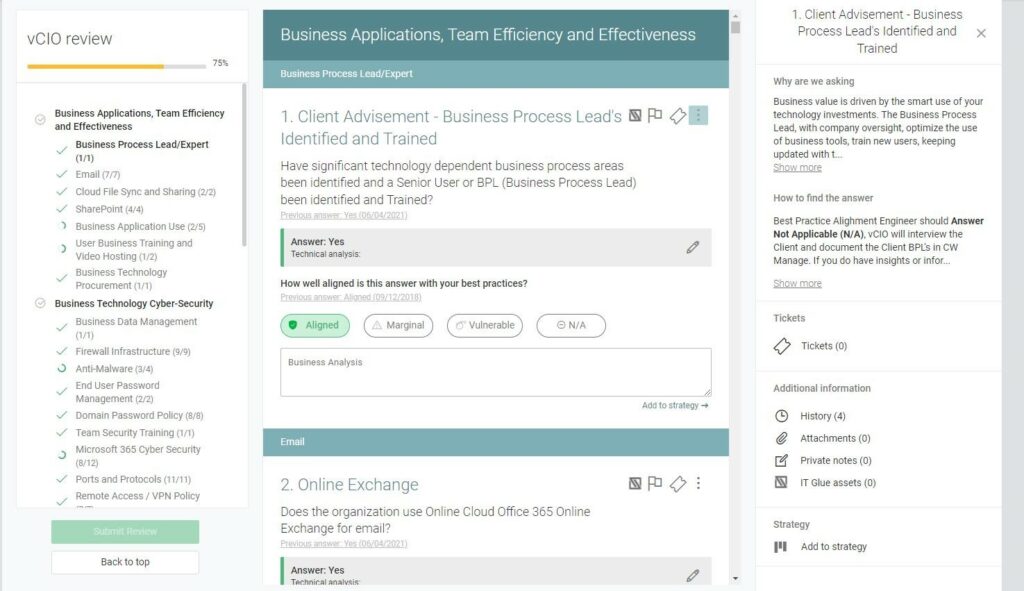Step 1: Understand what you need to evaluate
1. Your team’s efficiency and effectiveness using business technology
2. Your defenses against cybersecurity threats
3. Your IT risk management, data protection, and disaster recovery
4. Your IT infrastructure
Step 2: Take a self-assessment
- 1. Does my company have supervisors who manage and maintain the processes for how employees use our existing technology?
- 2. Do we have a strategy to migrate our legacy, on-site technology to the cloud where needed?
- 3. Do we utilize cloud-based collaboration tools to boost productivity, and are staff trained to use these tools?
- 4. Have we appointed specific employees to be responsible for selecting, implementing, and adopting technologies to improve company productivity?
- 5. Do we use multifactor authentication for all vital business applications?
- 6. Are staff trained to recognize and address current and emerging security threats?
- 7. Are staff aware of the cybersecurity measures to follow while working remotely?
- 8. Is our disaster recovery plan for data and technology regularly reviewed and updated?
- 9. Have we hired an advisor to help prioritize business and technology initiatives?
- 10. Have we created an infrastructure roadmap to guide our adaptation of new technologies and help improve our business?
Step 3: Evaluate your results
If you answered no to three or more of the above questions, then your business technology is hurting your productivity, efficiency, and bottom line. To transform your technology into an asset, engage an expert to evaluate the four areas in step 1 and provide recommendations for improvement. Note that this is not a responsibility you hand off to any IT guy. The person you select should be an experienced leader that can identify problems and guide you toward solutions. Feel free to contact the experts at Leverage IT if you need help.

Step 4: Create the roadmap and implement your plan
How to easily improve the business value of IT
Gaining value from business technology can be simple. At Leverage IT, we’ve been helping clients accomplish just this every day for more than 20 years. Our Navigate Digital Transformation Service can help evaluate your IT performance, create your roadmap for improvement, and communicate the business value of IT to your company’s decision makers. The service also helps enable your organization to adopt new, essential technologies to stay competitive and grow in a digital world. Book your consultation today.